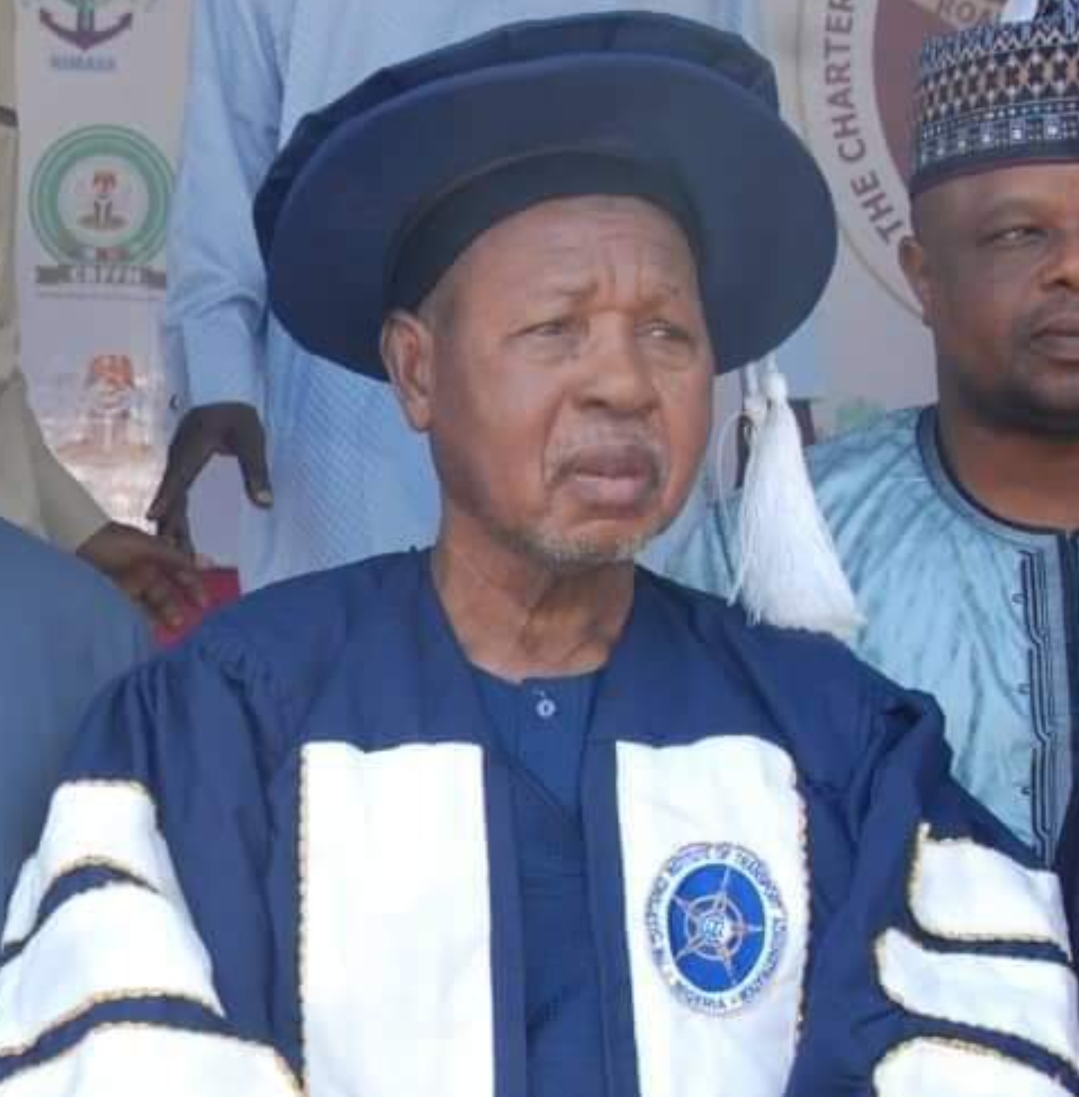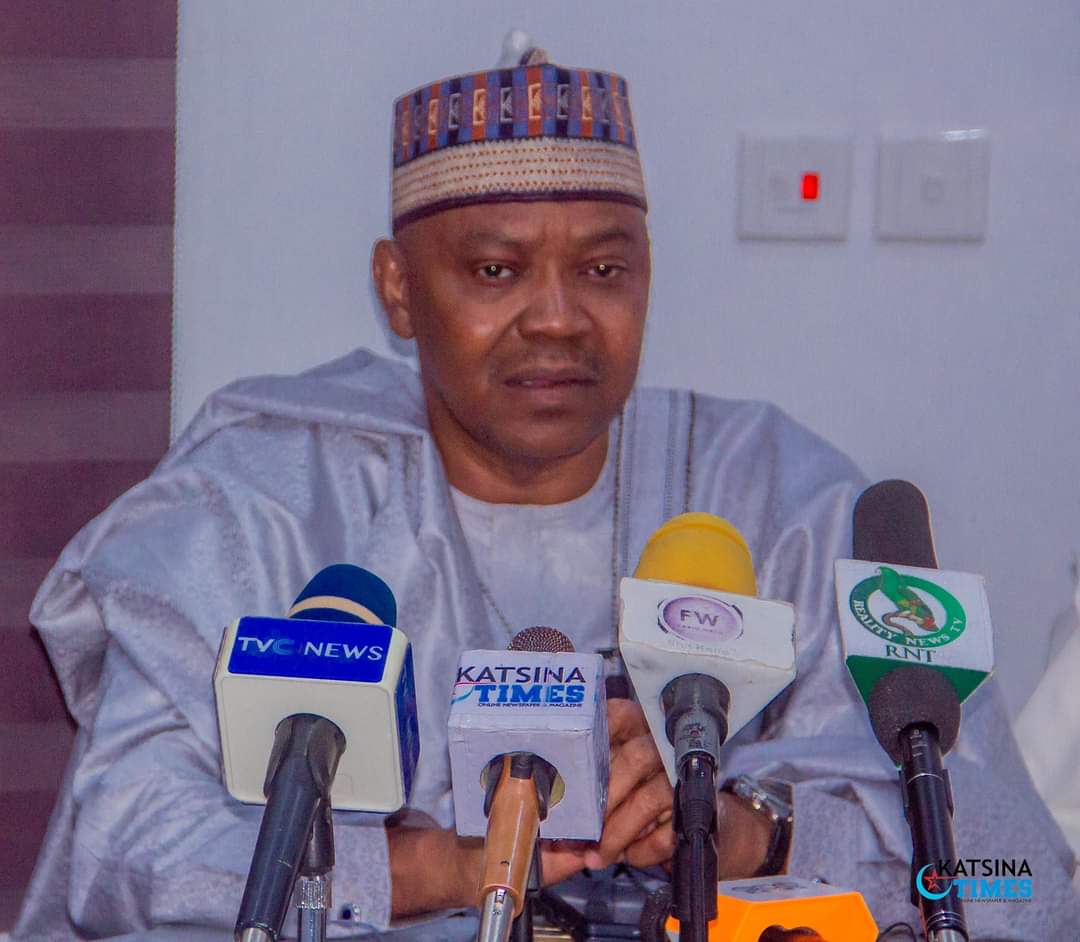The Rise and Fall of King of Kings Bandits, Halilu Sububu 1986-2024

- Katsina City News
- 10 Nov, 2024
- 213
By Dr. M.A. Rufa'i
Alhaji Halilu Sububu, otherwise known as Kachalla Halilu or Halilu Tubali, by his playmates, was born in 1986 into a bandit-family in Maniya. He started banditry in Sububu. He married two wives, had four children – two males, two females – and finally settled in a mining field of Bagega.
Sububu was eventually killed in a military ambush and cross-fire in Mayanchi, on September 12, 2024. He lived and died in his home state of Zamfara.
Halilu grew up in Sububu, one of three ancient centres of rural criminality in Zamfara State: Sububu, Dumburum and Dan-Sadau. From these areas, armed banditry began and spread to other places. These areas are largely ungoverned and under-governed spaces, owned and controlled by men of the underworld. It is those bandit zones that made Zamfara State the epicenter of armed banditry in Nigeria.
Halilu was the most notorious of all the bandit-warlords trained in all those centres. Even though, very quiet and less popular, but more dangerous than all his famous cohorts, like his boy, Bello Turji, colleague Dogo-Gide and his age-long friend, late Kachalla Ali or Ali Kawaje. All these kingpins addressed him as ‘Oga’ meaning boss or leader, due to his network and influence in the making of bandit-leaders in the Northwest.
Halilu was extremely quiet, mostly recognised by the underworld, security operatives and immediate communities, where he operates. There are about 85 major bandit camps across the Northwest, and Halilu greatly influenced and controlled over 46 bandit camps, mostly in Zamfara and the neighbouring states of Sokoto, Katsina, Kaduna, Katsina and Kebbi.
Bandit life
Kachalla Halilu was a clever, cunning bandit, who understands the military might of the Nigerian State and the need to avoid open confrontation with the military. He hardly engages the security forces in a gun-battle. This is unlike his boys and cohorts (late Shadari, late Ali Kawaje and late Damana) all killed as a result of military operations.
Kachalla Halilu only provided material and logistic supports to all those bandits who felt they have the capacity to engage the security forces. He does not believe in open confrontation with the military, always against making his identity public, a typical criminal life-style. This partly accounted for his long-life and prosperity in banditry.
It is reported that in his entire bandit career of 22 years, Halilu only engaged the soldiers on the battlefront four times – in Kurfa, Gwashe and Bakura. His fourth and last engagement with soldiers claimed his life and 57 others around Mayanchi village, Maru local Government, Zamfara State.
Most of Halilu’s notoriety was on his local soft-target enemies. The innocent, defenseless communities as well as the vigilante groups. Some of his major attacks were on communities with strong presence of the vigilante such as Gando, Gorar-Namaye, Dan-kurmi and Duhu, in Anka and Bukuyum LGAs of Zamfara State.
Halilu was an expert and high-profile kidnapper, cattle rustler, gunrunner and above all recently big-time artisanal gold-miner. Most of his wealth and influence were derived from these underground enterprises.
Criminal networks
Halilu was responsible for the recruitment, training and supply of arms and ammunitions to several bandit groups, making him the most popular bandit and indeed the wealthiest of all the bandit warlords in Nigeria. His large number of men, weapons, territorial control, international connections and material wealth, added to his popularity.
He was inherently generous. Always motivating younger bandits, as he did to Bello Turji, Damana, Nagallah, Jemo Baki and Jemo Sumolly. He supported them with cash, cows, arms and operational know-how. Hence, most of these younger bandits looked on to him for motivation, guidance, support and motivation.
Halilu was a bandit-warlord with the largest number of men. His forces, were put between 1,000-1,200, spread mostly across the tripartite bandit-states of Zamfara, Kaduna and Katsina. All the operational equipment used by these bandits: arms, ammunitions, motorcycles and other communication gadgets belonged to Kachalla Halilu. This is why no bandit-leader had ever-dared Halilu.
He was unlike other smaller gang leaders like Turji, Dan-karami, Ado Aleiru, Nagallah, Nasanda, late Buharin Daji, late Ali Kawaje and Dogo-Gide that were often characterised by frequent inter and intra-gang violence.
Therefore, Halilu’s network, influence and generosity earned him unconditional respect among the bad guys and the title of ‘king of bandits’, more powerful and influential than Kachalla.
Predicting the killing of Kachalla Halilu
The death of Kachalla Halilu was long predicted. His wide network made him the most widely travelled bandit. That was an expensive risk-taking venture by Halilu. Partly motivated by his network, weapons and knowledge of the difficult terrain in which he operated, his travel itinerary is often known by those under him and his local enemies. This is very uncommon to most bandit leaders.
Most of his boys, including Bello Turji, late Shadari, Alhaji Bello and Lawali Na’ika warned him against these routine movements with large number of entourage. And that eventually led to his death.
Therefore, the ambush and elimination of Halilu, was for long predicted and expected by his bandit-followers. Reason for this prediction is that most of the bandit kingpins that were neutralised were on transit, away from their familiar terrain.
Bandits’ movement became more challenging with airstrikes and raids in the North West. Kingpins like Kachalla Ali, Buderi, Balerin Kaduna Damana, Buharin Daji or Buhari General were all victims of these operations outside their operational bases. Bello Turji said in one of his interviews ‘the moment a bandit-leader is habitually-mobile, he is getting closer to his grave’. That is why Turji doesn’t go outside his immediate environment, and usually moves discretely with fewer bandit-fighters within his comfort zone; Shinkafi, Isa, Sabon Birni and Zurmi in Zamfara and Sokoto states.
Also, until his death, most people heard little about Halilu and his face was not often in the public and social spaces. Unlike, his boys Bello Turji, Dan-karami, Dan-Sadi, Baleri Fakai and Kabiru Maniya, amongst several others, that formed the social-media generation of bandits.
Events leading to the fall of Halilu
The fall of Halilu, a bandit kingpin, gold-miner, bandit-mediator and the richest of all bandits was a product of planned and coordinated operations, that involved different stakeholders – security operatives, vigilantes and the communities – that are victims of his high-handedness.
The death of Halilu could have been more difficult but for his mobility culture. On the eve of his travel to Tubali and Sububu, his birthplace, Halilu toured all his neighbouring mining and bandits’ camps in Dan-kamfani, Kawaye and Duhuwa, all in Bagega mining fields, Anka Local Government, Zamfara State.
The essence of the visit was to coordinate the mining activities for the three weeks he will be away. Sources, mentioned how he was extra-ordinarily friendly and generous to the bandits, the miners and large number of labourers across the mining fields.
It was in Sububu that Halilu released his last video, on Tuesday, September 10, 2024, as he was killed two days later, on his way back to Duhuwa, on September 12, 2024.
In the video, he called for the unity of the bandits against the vigilante and security forces. He also emphasised on bandit sympathy on the Fulani folks and unity of the Fulani in the Northwest. In the video that sounded like his last sermon, which of course it turned out to be, he called on other kingpins like Alhaji Ado, Alhaji Na-Shama, Alhaji Shingi, Dogo Gide, Gwaska (Dan- Karami) and Black as well as his boy Bello Turji.
The account of the event that led to his death was reported by different sources as follows: Kachalla Halilu left Sububu to Tubani around 12-1am, of Wednesday, September 11.
The fall of Kachalla Halilu
Halilu often travelled along with a large armed entourage, on 66 motorcycles, each with three armed men making a total of about 198 escort. It is this lifestyle that consumed him. There was a credible intelligence about this movement, that the ‘king’ has begun his journey back to Bagega. Saying that he has to stop by (zango) and later also returned to Sububu for about 45 minutes
He will then continue the journey. Halilu like most of the mobile-bandits used cattle routes and cattle tracks for movements. It was also reported to security that he had passed via the Dan-Buzu cattle route to Dan-Benchi, then to Kaya all in Maradun LGA. It was from here he visited Bayan-Ruwa Maradun, an area under absolute control of the bandits, mostly his boys namely Jemo Smolly, Saidu Na’ika, Lawali Na’ika and Ali Dan-Oga.
In Jemo’s camp at Bayan-Ruwa, Maradun, Halilu and his entourage stayed briefly for refreshment and enquiry from colleagues and informants about safety of the road to Bagega. From here they proceeded to Gidan Dawa, Tsohuwar Banaga and crossed the river by canoe to Mayanchi. It was at this point that the security forces with the support of the Askarawa vigilante group got to knew the exact cattle route that the bandits would use to their final destination.
Therefore, an ambush was arranged against them at Gangaren Kirya, around Mayanchi, where the final battle took place, according to an eyewitness and also active participant in the operations. The cross-fire started around 6:45pm and lasted for about 10 hours – from 6:45pm on Wednesday, September 11, to 4:30am the following Thursday morning, September 12, 2024. This was where the ‘king’ and 56 members of his entourages met the anger and might of the Nigerian military. Some of the most powerful Kachallas that were killed along with Halilu include.
Therefore, the fall of Halilu was a major landmark in the fight against armed banditry in the Northwest. Large number of bandits including his boys are now demoralised, psychologically weakened by the death of their farther, mentor, mediator, arms supplier and supporter.
Also, their major arms supply-chain is now broken, the unity of the bandits is at its lowest ebb. Communities affected by attacks, kidnapping and forced labour would also have a sense of relief with the death of Halilu.
Although, new leaders would naturally emerge, but not as strong, powerful, influential and wealthy as Halilu. His main camp at Bagega is the worst affected because all his four most likely successors – Alhaji Bello Kaura, Dan-Goronyo, Mati and Shehu were also killed in an airstrike, few days after the death of Halilu. Therefore, the bandit-ring of Halilu is presently in disarray.
Although, new Kachallas/leaders would naturally emerge, as the case of Bello Dan-Rani that replaced late Ali Kawaje in Dansadau and Birnin-Gwari forests, Kachalla Makoro that took the bandit-leadership of late Damana gang in Maru axis, as well as Kachalla Mamam Togo that succeeded late Nagallah in Bindin and Bini forests.
In fact, none of these new sets of bandit-leadership has the capacity, the audacity, prowess and popularity of their erstwhile master. After the fall of its initial leader, usually rivalry, power tussle, split and creation of small cells with less operational capacity takes over. Therefore, the fall of bandit-king Halilu will definitely break the bandits’ ranks, cut-off their arms supply chain and create a chance of a new Kachalla, certainly not as strong, powerful, influential and wealthy as the notorious Halilu.
His main camp at Bagega and other places are the worst affected because all his four most likely successors – Alhaji Bello Kaura, Dan-Goronyo, Mati and Shehu – were also killed in an airstrike few days after the death of Halilu. Therefore, the bandit-ring of Halilu is presently in disarray.
Dr Rufa’i is a lecturer, Department of History and International Studies, Usmanu Danfodiyo University Sokoto murtala.ahmed@udusok.edu.ng
Culled from Daily Trust





